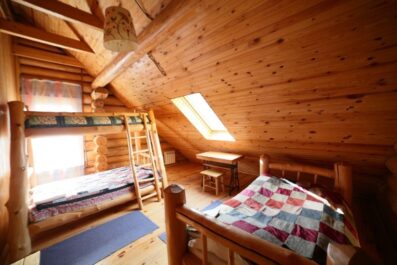What Makes an Active Adult Community Different from Traditional Retirement Homes?

When people think about retirement living, they often expect quiet facilities where older adults slow down, focus on healthcare, and take things easy. While traditional retirement homes still serve that purpose, the newer model of community living is becoming increasingly popular.
These communities are designed for people who want more than just a place to live. They want a lifestyle that’s dynamic, social, and focused on wellness rather than a sedentary one.
But what really separates active adult communities from the retirement homes we’ve all grown up hearing about? Let’s break it down.
Lifestyle vs. Facility
Traditional retirement homes are often structured around care. They’re intended for people who may need assistance with daily living or regular medical support. The environment, thus, tends to focus on meeting essential needs and offering stability and safety.
Active adult communities, on the other hand, are built around lifestyle. Instead of simply providing shelter and services, they encourage residents to live fully. Think fitness classes, hobby groups, travel clubs, and neighborhood events.
The focus is less about winding down and more about trying new experiences.
Level of Independence
One of the biggest differences is how much independence residents maintain. In a retirement home, support staff often handle daily routines, from meals to laundry to medication management. While this kind of support is vital for some, others find it limiting.
Living in an adult community in your area of choice is quite different. For example, if you’re in Florida, active adult communities in Jacksonville allow you to have your own private home or apartment. Residents handle their lives as they choose.
The community offers conveniences like maintenance services and shared amenities, but residents remain in control of their routines.
Emphasis on Social Connection
Loneliness can be a real concern in later life, and retirement homes sometimes struggle to provide fulfilling social outlets beyond organized activities. Active adult communities address this concern by introducing social opportunities into daily life.
Residents find it easy to connect through shared interest clubs, group fitness sessions, cooking classes, or even community trips. Many people move specifically because they’re looking for a like-minded community where friendships can be formed naturally.
Age Restrictions
Retirement homes frequently offer medical features for diverse age ranges, including nursing staff, on-site clinics, or specialized support for those who need extra care. Active adult communities aren’t healthcare facilities, and they’re designed with older adults in mind.
Most communities, therefore, cater to adults aged 55 or older. The design makes life easier without making residents feel like they’re in a clinical setting.
Wellness Beyond Healthcare
In retirement homes, wellness is often tied to health services. You get nurses visiting you, medication management, or even therapy sessions. Active adult communities broaden the definition of wellness, taking mental health into account as well.
They see it as a combination of physical activity, mental stimulation, and emotional well-being. Expect things like meditation classes, art studios, pickleball courts, and educational seminars.
Instead of responding to health issues as they arise, the community actively helps residents stay healthy and active for longer.



